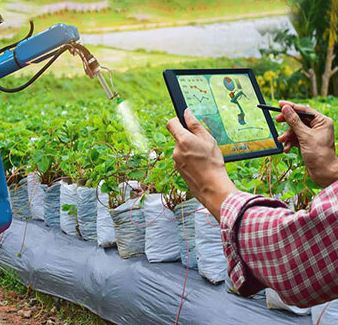Trends in Agriculture in India: Since the earliest human populations, agriculture has been developing. The field of agriculture has not been ignored by the world’s rapid adoption of technology. In these situations, companies, also known as new businesses, innovate and compete to use cutting-edge technologies like the Internet of Things (IoT), artificial intelligence, machine learning, etc. to improve the world. In this blog, we’ll talk about emerging companies that are driving innovation as well as the newest trends in Indian agriculture.
Additionally, recent advancements have improved society’s standard of living. This has occurred all over the globe, not just in India. After talking about this, we’ll move on to new advancements in the industry.
What are some of the most recent agricultural developments in India?
We will only go into depth about a few recent trends in Indian agriculture, despite the fact that many of them have contributed to positive changes in this world. Let’s start now.
An increase in food grain output: In India, the Green Revolution has greatly increased food production. Congressman Shri Lal Bahadur Shastri served as its head when this revolution got underway in 1967. The primary three Indian regions targeted for this initiative were Punjab, Haryana, and Uttar Pradesh. Punjab, often referred to as the breadbasket of India, succeeded in the implementation of the concept.
And it was accomplished thanks to the introduction of novel food grain varieties that had their DNA altered. As a result, this tendency has had an effect on the development of higher-yielding food grain varieties and drought-resistant crop varieties, among other things. This was and still is India’s newest agricultural fad. Due to study and development, new crop varieties are introduced every year.
Diversification in agriculture: In order to increase soil fertility and quality while there was a rush for crop production, agriculture needed to diversify. Agriculture diversification typically entails the development of horticultural products, vegetables, oils, nitrogen-fixing plants, etc. One of the most recent agricultural developments in India is this. This shift is essential because the newest technology trend also requires a name.
Agriculture and its results under the current conditions: Horticulture is continuously expanding in India because of the country’s diverse range of soil types and soil textures. According to reports, India is the world’s top producer of fruits and the second-largest creator of vegetable crops. India’s most recent agricultural tendency is expanding along with the tide. Consequently making up a sizable portion of India’s Economy.
The Indian economy’s growing impact of floriculture: With a contribution of INR 266 billion, floriculture is one of India’s newest agricultural developments. The creation of flowers, also known as floriculture, is evolving along with agriculture-related technology. According to reports, 31000 hectares of territory in southern Indian states are used for floriculture.
What new developments have there been in Indian agriculture recently?
If you’re a farmer, of course, the latest innovations might drive you crazy. However, we have categorised some of the most recent developments in Indian agricultural technology. Real-time changes brought about by these technologies are affecting agribusiness. Additionally, these might alter how farmland develops in the future.
The effect of the top 10 Agritech trends and innovations in 2022 is revealed in the statistics below.
Internet of Things

Definition: The Internet of Things is the use of synchronised data across multiple platforms to share necessary information in real-time.
Crop monitoring in conventional farming takes a lot of labour and time. As a result, the Internet of things uses technology to alter this entire situation and make it real-time.
Allow us to explain. The use of sensors, such as soil temperature and humidity sensors, plant and livestock tracking devices, etc., allows for the collection of a lot of data.
Farmers can access this information in real time on their mobile devices thanks to these monitors. Consequently, India’s newest tendency in agriculture is this cutting-edge technology.
Agricultural Robotics

In Indian agriculture, agricultural robotics is beginning to take form. Despite the fact that the idea has been around for a while. Businesses engaged in technology are currently working very hard. This most recent development in technology is used for sowing, selecting fruit, harvesting, planting, and a lot more things.
Artificial intelligence

Farmers can access real-time info by using artificial intelligence in farming. Since then, this technology has only provided producers with the crucial real-time information they require, such as weather information, crop yield, and price information. Farmers are able to decide with knowledge thanks to this. Furthermore, this technology makes it feasible for prompt correction and corrective action.
Drones

The primary uses of drones are to monitor crops, apply pesticides and fertilisers, etc. They are what they are described to be and are known as unmanned aircraft vehicles. This most recent development in farming and agricultural technology is revolutionising farming practises by lowering the labour intensity needed to produce a crop.
Equinox’s Drones
This Indian startup concentrates on using cutting-edge technologies, such as ortho-mosaic maps, 3-D point clouds, contour maps, etc., to monitor crops using unmanned aerial vehicles (UAVs). The start-up gathers, edits, and analyses crop picture data. They can use this information to estimate the crop threat and possible season yield.
In India’s rural and urban regions, this most recent development in agricultural technology is bringing about significant change.
The bottom line
In this article, we talked about the most recent agricultural trends in India and the innovative start-up companies. We also talked about the various facets of the most recent innovations that are popular in India. We also talked about a few Indian companies that were engaged in the same. How do you feel?


